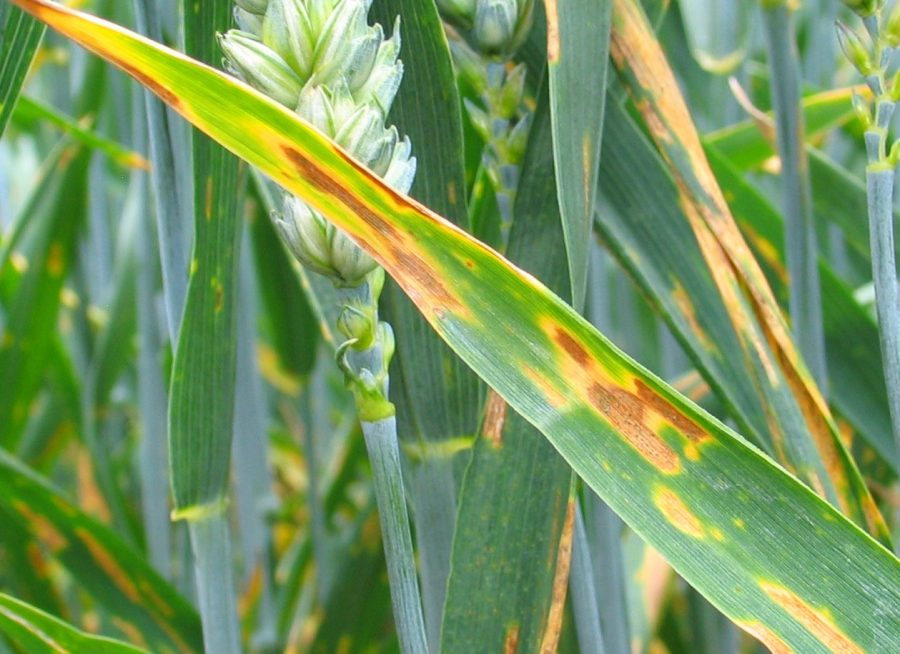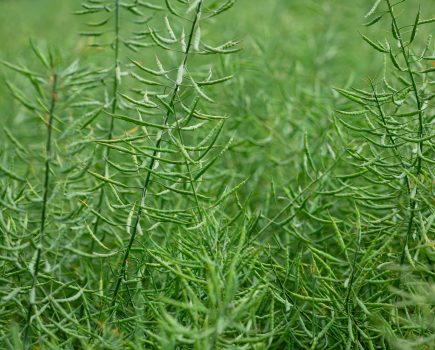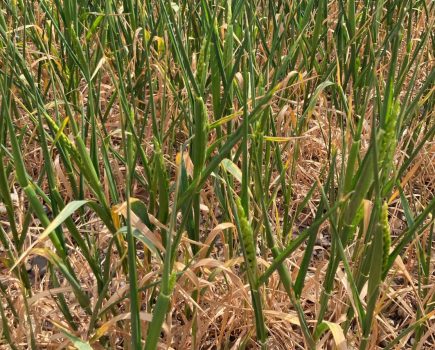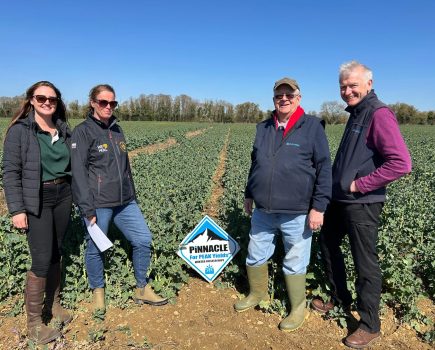It is almost a decade since the last really bad Septoria season, and much has changed in that time. David Shepard, Hutchinsons agronomist based at Canterbury, examines how this might influence the crucial T2 spray this spring.
Aside from 2019, when Septoria hit some wheats late in the season, 2014 was the last time there was widespread high Septoria pressure. In recent seasons, yellow rust has often grabbed more headlines.
Who knows what the weather will do over the coming weeks, but if conditions favour high Septoria pressure, control could be far more challenging than in 2014. The pathogen is evolving and adapting to environmental conditions continuously, with new, more vigorous isolates able to spread and infect crops far quicker.
If disease is present on lower leaves, do not assume it will go away; cold often slows disease, but only prolonged periods of low temperatures will reduce inoculum significantly.
Managing risks
Septoria is the focus of T2 flag leaf fungicides, although yellow rust, and later-developing brown rust, should also be factored into programmes.
The T2 protects the main two light-collecting leaves, responsible for 65% to 70% of total yield. A good product and robust dose is needed to protect crops through the back end of the season, when the bulk of yield building occurs.
Curative action is needed, too. Because the T1 is applied to leaf 3, it is unlikely to cover much of leaf 2 (unless applied very late), so leaf 2 could have been exposed to disease for some time. If disease pressure is high, with plenty of inoculum in crops, good curative action is essential – either from highly potent products or higher doses of less potent products.
Generally, the strongest curative options are fluxapyroxad + mefentrifluconazole or fenpicoxamid + prothioconazole so these will be the go-to choices in anything other than a low-risk situation. Both offer similar Septoria control, so deciding between the two may come down to other factors – e.g mefentrifluconazole is slightly better on brown rust while fenpicoxamid has an edge against yellow rust.
Including the multisite folpet can be worthwhile for extending Septoria protection in high pressure situations and for resistance management.
Of the older chemistry, AHDB fungicide performance work shows a notable drop in the efficacy of some SDHIs that were once the mainstay of T2 programmes. Growers need to be aware of the changes when choosing products, especially if curativity is needed.
There is still a place for products based on actives such as bixafen, fluopyram + prothioconazole, or other bixafen, fluopyram mixtures, which have shown higher activity than other SDHIs in Hutchinsons trials. But if Septoria pressure becomes significant, higher rates will be required.
If rust is the focus, rather than curative Septoria control, many products, such as benzovindiflupyr + prothioconazole, offer good efficacy and may deliver some Septoria protection too.
Time it right
Ideally the T2 should be applied at GS 39, once flag leaves on main tillers are fully emerged. However, there can be big practical challenges to this, especially when treating large areas, and/or when disease pressure is high.
Varieties can also differ significantly in the time taken for flag leaves to emerge. BASF trials show the time between the first and last flag leaf emerging within a plot of an individual variety can vary from typically 10 to 14 days in some varieties, up to 25 days in others. For anyone growing the latter, waiting that long for 100% of flag leaves to emerge could present real problems in a high disease pressure situation, raising difficult questions about optimum spray timing.
Crop stress, drilling date, nutrition, crop evenness, and other factors also affect flag leaf emergence, so all you can do is go for the majority, at a time when you can get around everything.
For more like this, sign up for the FREE South East Farmer e-newsletter here and receive all the latest farming news, reviews and insight straight to your inbox.







